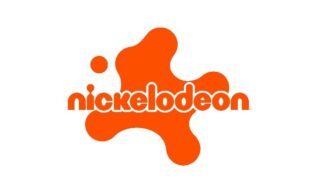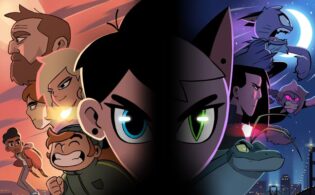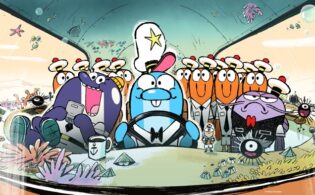During a session in Annecy, Super RTL’s Marion Winter and Kerstin Viehbach talked about the children’s brand Toggo, discussing content wish lists and rights needs.
Winter, senior manager of content acquisitions and co-productions at Super RTL, and Viehbach, commissioning lead for kids’ fiction, emphasized the strengths of the Toggo children’s brand.
“Toggo is our kids’ brand, under which, as an umbrella, we have all kinds of children’s entertainment content for daytime,” Winter said. “We like to offer content to watch, listen, play and participate. We try to focus on the needs of children everywhere they are: on air, off air, online and with live events.”
Toggo comprises school and preschool, though it used to be two brands, but everything is now combined.
“Everybody knows us as Super RTL, but our main brand for children is Togoo,” Viehbach said. “We are really successful with it. Everything is under the label Toggo, but not everybody knows it.”
Winter added, “We pursue a multiplatform approach, and we try to build brands with the shows we acquire or co-develop. That’s our DNA. We don’t have a studio background as some of our international partners have. We are really relying on partners. We try to build a brand out of it for our territories.”
The footprint spans linear free-to-air with Toggo and the time-shifted Toggo Plus; digital with RTL+, the Toggo app, a presence on YouTube Kids and YouTube, Toggolino, Pluto TV and TikTok; audio with Toggo Radio; licensing; and events with the Toggo Tour, which reaches in ten Germany cities
“What we don’t reach is the older kids; it’s really difficult,” Viehbach. “In the linear space, they stop watching TV at the age of 7 and you can find them on SVOD and apps and all the platforms. We are trying to get them back.”
The plan for doing this involves the expansion of aspirational content and visually older formats, more gaming video content with TOGGO GG, the new lifestyle magazine TOGGO HypeZeit, the TOGGO Touchdown football magazine, SVOD-exclusive live-action formats and a live-action show called Uferpark in production.
“Our target demo is 2 to 13, but the absolute sweet spot is 6 to 11,” Viehbach said. “We are trying to be gender-neutral. We have to reach a broad audience. We can go a little bit more niche in the digital space, with boy-skewing, girl-skewing, boys’ action, but we still need shows for linear; therefore, we need gender-neutral shows.”
The programming breakdown looks something like 80 percent animation, 20 percent live action, and 60 percent with an episodic format and 40 percent being slightly serialized.
“We are trying to build up the live-action slate,” Viehbach said. “For shows like Uferpark, we need additional programs, so we are on the lookout for live action. We prefer episodic stories because you can repeat them again and again and mix new seasons with old seasons. We are also fond of, and know that older kids like, stories that are more deeply told and lean into action-adventure. Comedy is key, but if you have a cool action-adventure show, we don’t destroy it with too much comedy. We also want to intrigue children and generate fandom. We think it’s really crucial that our topics are relatable.” She then pointed to the success of Angelo Rules, which centers on a boy, his school, family and friends but with a “larger-than-life” aspect to it.
“We also like to travel into big fantasy worlds,” Viehbach continued. “If we have a new show that nobody knows, we need a lot of episodes. If we air it in half-hour slots with that many minutes back-to-back, we need a lot [of volume] so that children can find it on Toggo.”
She added that in working with producers, the idea would be to get approached at the very beginning. “We prefer to work together with people who are attached to a production company because it has to be realistic. But if there’s a one-pager with a cool idea and it’s not attached to a production company, we also have also ideas about who to work with. We do co-developments. We don’t do co-productions, but we do prebuys. That means we are following a production process from the very beginning, looking at each production step and giving a lot of editorial feedback.”
Winter said that while there are different ways of working together, “the best thing is to get all rights. If you have more partners already attached, it’s a bit difficult because you have to share. The rights we need are free TV, all kinds of VOD rights—AVOD, SVOD, catch-up—and all rights to create clips, compilations and games. We want to be free to integrate it into our various platforms, so there’s a huge variety of rights that we try to cover. The better we are with that, the better we can build the brand.”
 TVKIDS
TVKIDS






